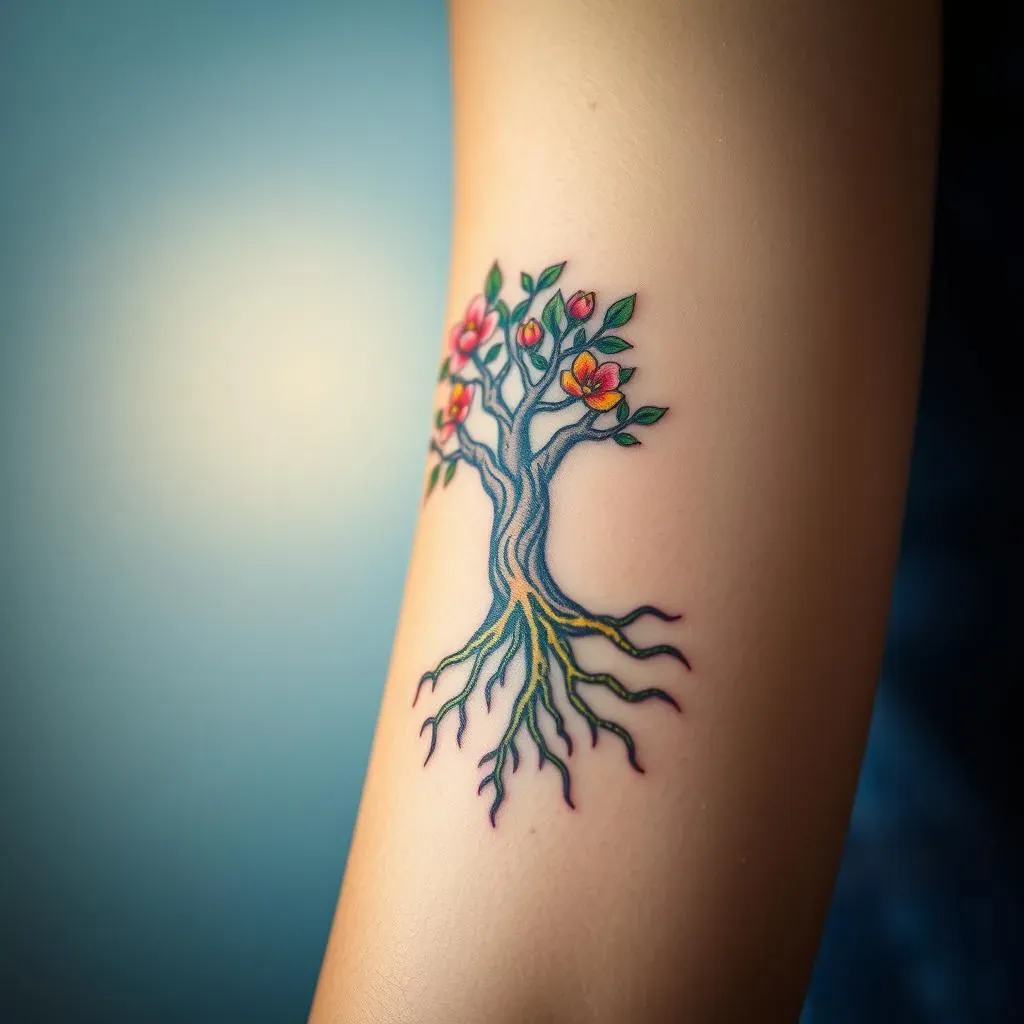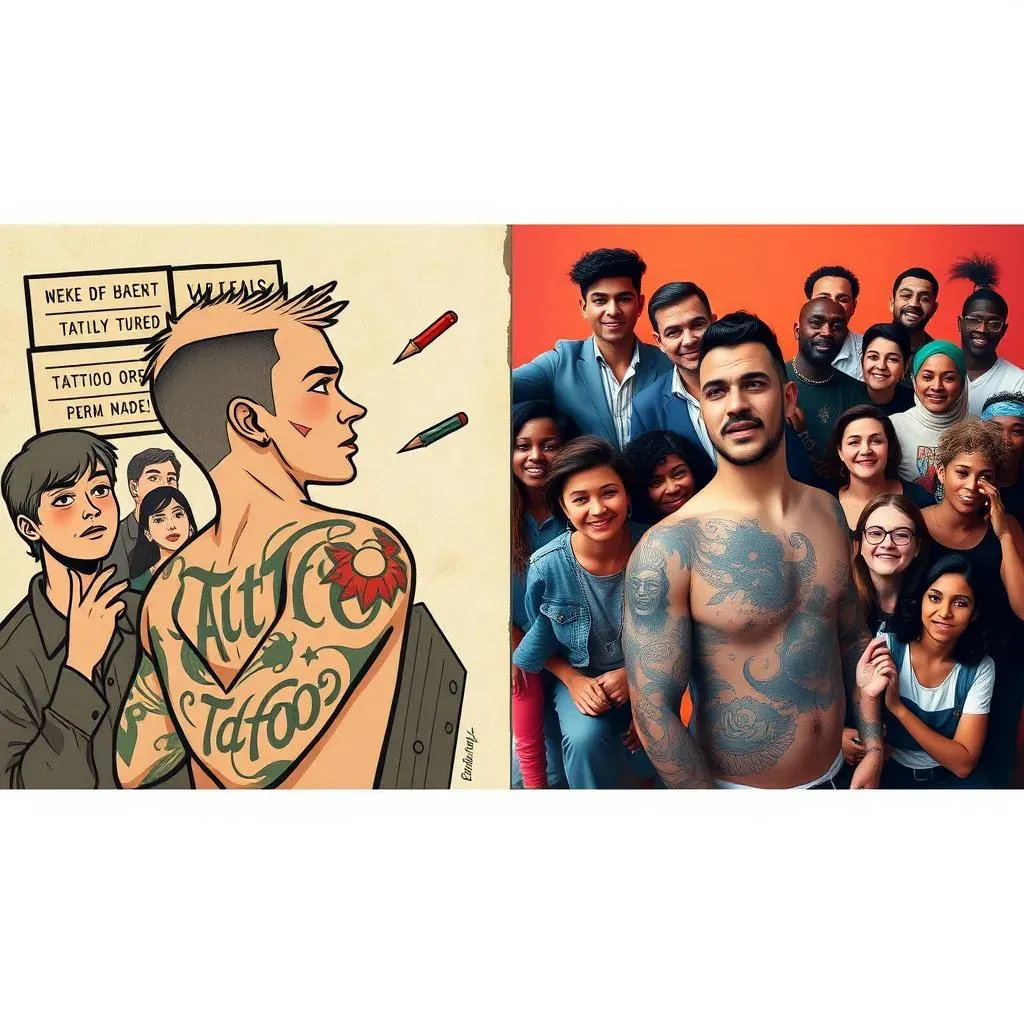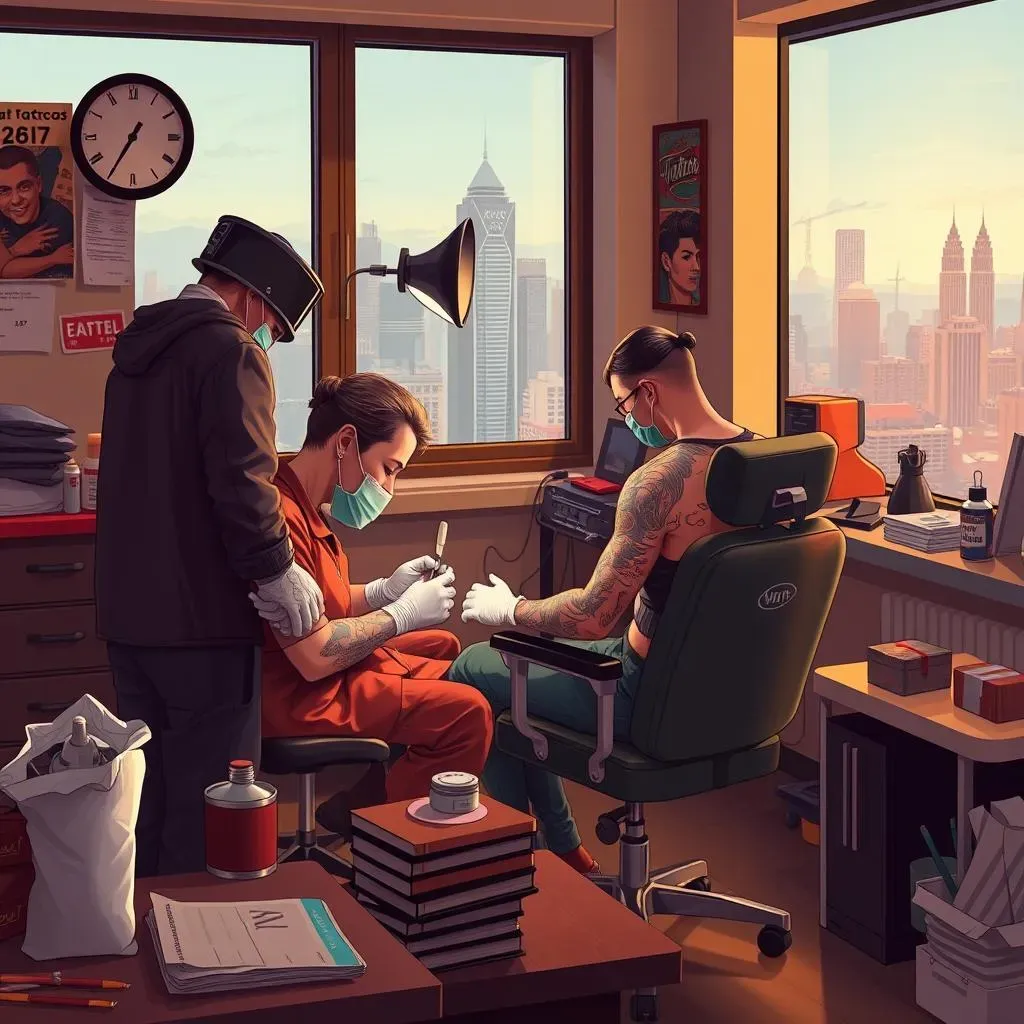Table of Contents
Is tattoo art a fleeting trend or a timeless form of expression etched onto the human canvas? For centuries, tattoos have served as powerful symbols of identity, rebellion, spirituality, and belonging. From ancient tribal markings to modern masterpieces, the art of tattooing has evolved, reflecting cultural shifts and personal narratives. But what exactly elevates a simple tattoo to a work of art? This exploration delves into the multifaceted world of ink and skin, tracing the historical roots of tattooing across diverse cultures, examining the techniques and skills that define a true tattoo artist, and confronting the social perceptions that have both stigmatized and celebrated this unique art form. We'll navigate the health risks and regulations surrounding tattooing, ensuring a well-rounded understanding of this increasingly popular practice. Whether you're a seasoned collector, a curious observer, or someone contemplating their first piece, join us as we uncover the layers of meaning and artistry behind every carefully placed mark. Discover why tattoo art continues to captivate and transform the way we view ourselves and the world around us.
Tattoo Art: More Than Just Ink
Tattoo Art: More Than Just Ink
Beyond Decoration: The Meaning of Tattoo Art
Let's be real, tattoos are way more than just pretty pictures on skin. They're stories, memories, and declarations all rolled into one. Think about it: people get inked for all sorts of reasons. Some are honoring loved ones, marking milestones, or showcasing their passions. It's like wearing your heart on your sleeve, except it's permanently etched there with vibrant colors and intricate designs.
And it's not just about the personal stuff. Tattoo art can be a powerful way to connect with a community or culture. From traditional tribal markings to modern interpretations of classic themes, tattoos can signify belonging, heritage, and shared values. They're a visual language that speaks volumes without saying a word.
The Canvas and the Artist: A Collaborative Dance
Here's the thing: a killer tattoo isn't just about a cool design. It's a collaboration between the person getting the tattoo and the artist wielding the needle. You bring your ideas, your emotions, and your skin, and the artist brings their skill, their vision, and their expertise. It's a partnership that requires trust, communication, and a shared understanding of what you're trying to achieve.
A talented tattoo artist isn't just a technician; they're a storyteller, a therapist, and a visual interpreter all in one. They can take your vague ideas and turn them into something tangible, something meaningful, and something beautiful. They can guide you through the process, offer advice on placement and design, and ensure that your tattoo is not only visually stunning but also a true reflection of who you are.
Aspect | Description |
|---|---|
Client's Role | Provides ideas, emotions, and personal story. |
Artist's Role | Offers skill, vision, expertise, and guidance. |
Collaboration | Requires trust, communication, and shared understanding. |
The Evolution of Tattoo Art Through History
The Evolution of Tattoo Art Through History
Ancient Ink: Origins and Rituals
Dude, the history of tattoo art is seriously mind-blowing. We're talking back thousands of years, with evidence popping up all over the globe. Think ancient Egypt, where mummies have been found sporting tattoos dating back to 2000 BCE. These weren't just random doodles; they were connected to religious rituals and social status. Imagine getting inked as part of a sacred ceremony – that's some serious commitment!
And it's not just Egypt. Ötzi the Iceman, who was discovered frozen in the Alps, had a bunch of tattoos that are believed to have been used for therapeutic purposes. We're talking acupuncture with ink! It's wild to think that people were using tattoos for healing way before modern medicine came along. Tattoos weren't just decorative; they were functional, spiritual, and deeply ingrained in ancient cultures.
Global Transformations: From Tribal Marks to Modern Styles
Fast forward a few centuries, and you see tattoo art evolving in different ways across the world. In Polynesia, tattoos were a huge part of the culture, with intricate designs covering the entire body. These weren't just aesthetic choices; they represented lineage, achievements, and social standing. Getting a tattoo was a rite of passage, a way to show your place in the community.
Meanwhile, in Japan, Irezumi (traditional Japanese tattoos) developed as a complex art form with deep symbolism. Often associated with the Yakuza, these tattoos were a sign of bravery, loyalty, and rebellion. From intricate dragons to serene koi fish, each image carried a specific meaning, telling a story about the wearer's life and beliefs. The evolution of tattoo art is a reflection of human history, a testament to our enduring desire to express ourselves through the art we wear on our skin.
Culture | Significance of Tattoos |
|---|---|
Ancient Egypt | Religious rituals, social status |
Polynesia | Lineage, achievements, social standing |
Japan (Irezumi) | Bravery, loyalty, rebellion |
Tattoo Art Techniques and the Modern Tattoo Artist
Tattoo Art Techniques and the Modern Tattoo Artist
The Tools of the Trade: From Coil Machines to Rotary Pens
Alright, let's talk shop! The modern tattoo artist has a whole arsenal of tools at their disposal, and it's way more than just a needle and some ink. You've got your classic coil machines, which are like the workhorses of the tattoo world. They're reliable, powerful, and give you that traditional tattoo feel. Then you've got rotary pens, which are newer and tend to be quieter and smoother, perfect for delicate lines and shading. And let's not forget the power supply, which controls the voltage and speed of the machine – crucial for getting consistent results. It's like the artist is a conductor, orchestrating the flow of ink onto the skin.
But it's not just about the machines. Needles come in all shapes and sizes, from liners for crisp outlines to shaders for smooth gradients. And of course, the ink itself is a whole world of its own, with different pigments and formulations for different effects. A skilled artist knows how to choose the right tools for the job, and how to use them to create the desired effect.
Mastering the Craft: Techniques and Styles
So, you've got the tools, now what? That's where the real artistry comes in. Tattooing is a skill that takes years to master, requiring a deep understanding of anatomy, design principles, and ink behavior. A good artist knows how to create clean lines, smooth shading, and vibrant colors that will last for years to come. They understand how to work with the contours of the body, creating designs that flow naturally and enhance the wearer's form.
And then there are the different styles, each with its own unique techniques and aesthetics. From traditional American tattoos with bold outlines and classic imagery to realistic portraits that capture every detail, the possibilities are endless. Whether it's watercolor, geometric, or blackwork, a talented artist can adapt their skills to create something truly unique and personal.
Technique | Description |
|---|---|
Linework | Creating clean, precise outlines. |
Shading | Adding depth and dimension with gradients. |
Color Packing | Filling in areas with solid, vibrant colors. |
Blending | Smoothly transitioning between colors. |
Is Tattoo Art? Social Perceptions and Acceptance
Is Tattoo Art? Social Perceptions and Acceptance
From Outlaw Ink to Mainstream Acceptance
let's be real, for a long time, tattoos were seen as the mark of rebels, sailors, and вообще, not the kind of people you'd bring home to mom. They were associated with the fringes of society, a visual shorthand for "don't mess with me." Think biker gangs, circus performers, and anyone who lived outside the norm. But times have changed, haven't they? Now you see doctors, lawyers, and soccer moms sporting ink, and it's no longer a sign of deviancy.
So, what happened? Well, a few things. For starters, the rise of celebrity culture has played a huge role. When your favorite actor or musician starts rocking a sleeve, it suddenly becomes a lot more socially acceptable. And let's not forget the internet, which has made it easier than ever to discover and appreciate tattoo art from around the world. The stigma is fading, and tattoos are increasingly seen as a form of self-expression, a way to tell your story and showcase your individuality.
Art, Prejudice, and Breaking Barriers
But here's the thing: even though tattoos are more mainstream than ever, prejudice still exists. Some employers still frown upon visible tattoos, and there are definitely people who will judge you based on your ink. It's unfair, but it's the reality. That's why it's so important to challenge these outdated perceptions and advocate for acceptance. Tattoo art is just that – art. It's a form of creative expression that deserves to be respected, regardless of the medium.
And it's not just about individual acceptance; it's about recognizing the cultural significance of tattoos in different communities. For some cultures, tattoos are a sacred tradition, a way to connect with ancestors and honor their heritage. By embracing the diversity of tattoo art, we can break down barriers and foster a more inclusive society. Is tattoo art a form of rebellion? Maybe. But it's also a form of empowerment, a way to reclaim your body and tell your story on your own terms.
Factor | Impact on Acceptance |
|---|---|
Celebrity Influence | Increased visibility and normalization. |
Internet & Social Media | Exposure to diverse styles and artists. |
Cultural Shifts | Evolving views on self-expression. |
Advocacy & Education | Challenging prejudice and promoting understanding. |
Navigating the Risks and Regulations of Tattoo Art
Navigating the Risks and Regulations of Tattoo Art
Safety First: Understanding Health Risks
so you're thinking about getting a tattoo? Awesome! But before you jump in, let's talk about safety. Getting a tattoo involves breaking the skin, which means there's always a risk of infection if things aren't done properly. We're talking bacterial infections, allergic reactions to the ink, and even bloodborne diseases like hepatitis or HIV if the equipment isn't sterilized correctly. I know, it sounds scary, but the good news is that these risks are totally preventable if you do your homework and choose a reputable artist.
Do your research, check reviews, and make sure the studio is clean and professional. Don't be afraid to ask questions about their sterilization procedures and the types of ink they use. A good artist will be happy to answer your questions and put your mind at ease. And remember, if something doesn't feel right, walk away. It's better to be safe than sorry when it comes to your health.
The Legal Landscape: Regulations and Licensing
Alright, let's talk about the legal side of things. Tattooing is regulated in many areas, but the rules can vary widely depending on where you live. Some places require tattoo artists to be licensed and studios to be inspected regularly, while others have little to no oversight. It's kinda like the Wild West out there! So, it's up to you to make sure your artist is operating legally and ethically.
Check your local regulations to see what's required. A licensed artist has met certain standards of training and safety, and their studio has been inspected to ensure it meets health codes. This doesn't guarantee a perfect tattoo, but it does give you some assurance that they're taking your health seriously. Plus, a reputable artist will have insurance in case something goes wrong. It's all about protecting yourself and making sure you're getting a tattoo from someone who knows what they're doing.
Risk | Prevention |
|---|---|
Infection | Choose a reputable artist, ensure sterilization. |
Allergic Reaction | Ask about ink composition, do a patch test. |
Bloodborne Diseases | Ensure proper sterilization of equipment. |
Legal Issues | Verify artist's license and studio compliance. |
The Enduring Canvas: Is Tattoo Art Here to Stay?
As we've journeyed through the intricate world of tattooing, it's clear that the question "is tattoo art?" is not just a matter of opinion, but a reflection of cultural values, personal expression, and historical significance. From its ancient roots as a symbol of status and ritual to its modern manifestation as a form of self-expression and artistic innovation, tattooing has proven its enduring power to captivate and transform. Whether viewed as a rebellious statement, a sentimental tribute, or a stunning visual display, tattoo art continues to evolve, pushing boundaries and challenging perceptions. As long as humans seek to adorn their bodies and tell their stories, the art of tattooing will undoubtedly remain a vibrant and meaningful part of our cultural landscape.